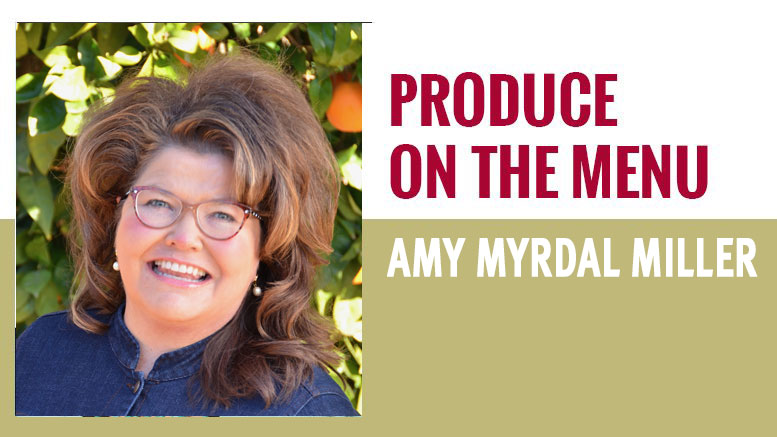Want More Produce on Menus? It’s Complicated
July 16, 2024 | 4 min to read
Since 2007, the author has engaged with foodservice operators, noting that menu innovation thrives in campus dining due to swift responses to student demands. In contrast, chain restaurants face complex approval processes, slowing innovation largely due to marketing's risk aversion. While taste remains a critical factor in selecting produce, challenges persist in sourcing and convincing growers to cultivate new items. Observing industry trends, there are encouraging signs for increased fruit and vegetable options in the coming years.

I have been working with foodservice operators from different sectors since 2007, watching how they work, learning about their challenges, and striving to help them put more produce on their menus.
One of the very first lessons I learned is that if you want to move quickly with new menu innovation, focus on campus dining operations. If students are demanding something new or different, the culinary and procurement teams can make it happen, often within weeks of seeing the need for fast innovation.
On the flip side of the menu innovation timeline are chain restaurants, which often have many stakeholders involved in developing, reviewing, and approving new menu items. The larger the chain, the longer the process takes to develop a new menu concept, do consumer testing, get approvals from procurement, legal, marketing, and C-suite executives, confirm distribution, and, if needed, get buy-in from franchisees.
I have recently been working with clients on major initiatives focused on produce, and what I’m seeing is confirming what I have seen for years. Chain restaurant operations are complex, challenging, and can differ greatly from chain to chain.
Privately owned chains can move more quickly than chains held by private equity firms where “too many cooks in the kitchen” bog down decision-making timelines.
Chains where marketing holds all the cards also move more slowly, as marketing professionals work endlessly to reduce risk with new menu offerings. Test, re-test, and test again becomes the name of the game to ensure core customers are interested in new items, willing to order them, and willing to pay a price that will generate profit for shareholders or franchisees.
It is rare to work with a chain restaurant in which the culinary team holds the power, but when the opportunity arises, it is fun to see the excitement of a chef working to improve or elevate their menu.
A recent conversation with a vice president of culinary revealed that their menu strategy was aligned with their design strategy for new restaurants, working to turn an older brand into a more contemporary brand designed to attract younger customers. The chef even talked about how new menu items could tie into décor.
A chef from a small three-unit regional chain speaking at a recent industry event said, “Our menu innovation starts with distribution. Our first call is to our distributors to see if we can get the produce items we need.” This chef does not have the power of a large chain. Distributors hold all the cards.
Moving further back in the value chain to growers is an interesting challenge for new menu development. Convincing a grower to grow a new produce item or a new variety of a produce item can be challenging. The grower must first be convinced there is a market for what they are growing.
Some restaurant chains do direct contracting with growers, but most leave those discussions up to their distributors to find the supply needed for limited-time offers (LTOs), seasonal menu items or year-round menu items.
Taste is our best bet for selling more produce. It’s the No. 1 reason we choose the foods we eat most often.
The demand for local sourcing can make introduction of new produce items challenging, especially when dealing with restaurant industry professionals who don’t understand why certain produce items are best suited for production in certain parts of the country.
So, what is the secret to getting more produce on menus at chain restaurants? I honestly wish I knew. The answer keeps changing.
I do know that some menu trends are happening now that are encouraging indicators for produce, and these include the fact that item counts on breakfast and lunch menus are increasing across the industry. New fruit and vegetable beverages, salads, side dishes, and entrees may appear on menus as we move through 2024 and into 2025.
Many in the industry are also talking about the “Ozempic effect” in restaurants.
As a registered dietitian nutritionist, I am hopeful that consumer behavior in restaurants will change, but as someone who has studied human behavior related to food and nutrition for more than 30 years, I am skeptical. There may be short-term gains for menu categories like salads for diners who think, “I want to lose weight. I’m paying for this expensive drug. I should order a salad.” But the consumer mindset of “I’m going out to treat myself,” is hard to break.
Taste is our best bet for selling more produce. It’s the No. 1 reason we choose the foods we eat most often. Chefs across the restaurant industry are our partners in creating delicious food experiences created with high-quality, flavorful produce.

Amy Myrdal Miller, MS, RDN, FAND is a farmer’s daughter from North Dakota, award-winning dietitian, culinary nutrition expert, and founder and president of Farmer’s Daughter Consulting, Inc. She is the retail nutrition marketing and foodservice partnership specialist for the Buy California Marketing Agreement/CA GROWN, a member of the Texas A&M Institute for Advancing Health Through Agriculture AgriLife External Advisory Board, a member of the Bayer Vegetable Seeds Horticultural Advisory Council, and co-author of Cooking á la Heart, a 500-recipe cookbook based on plant-forward eating cultures from around the world. You can learn more about her business at farmersdaughterconsulting.com and follow her insights on food and flavor on social media @alaheartamy.
9 of 16 article in Produce Business July 2024

